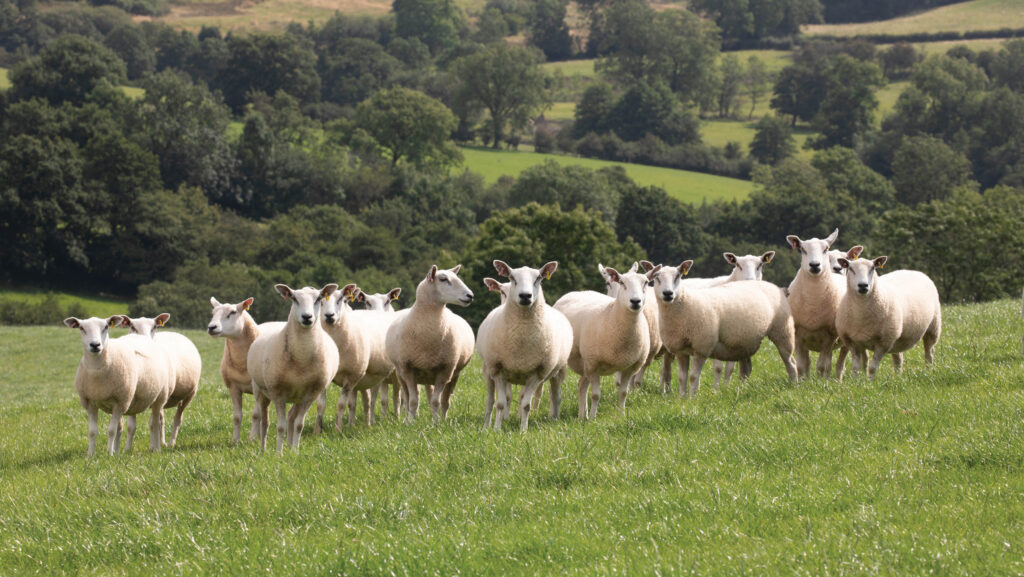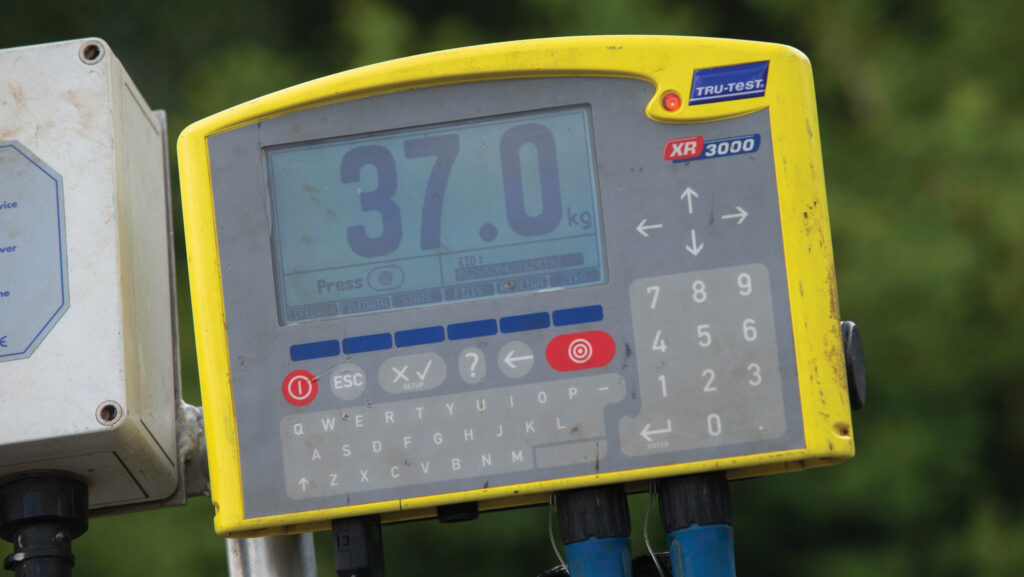Advice on lifting lamb weaning percentage
 © Tim Scrivener
© Tim Scrivener Sheep producers who have not yet weaned lambs should act now to avoid dragging down ewe condition ahead of tupping.
Independent sheep consultant Nerys Wright says weaning at 12 weeks is universally accepted as the optimal time.
Nerys, who completed a PhD on the effect of ewe BCS and liveweight on scanning percentages, lambing percentages and lamb growth rates from birth to weaning, explains:
“By 12 weeks, lambs have been grazing for a while and their rumens will be functioning enough that the amount of milk they are getting is not a big diet contribution.
See also: How cobalt deficiency tests led to higher lamb weights
But with grass growth stunted in many regions of the UK due to dry weather, Nerys says farmers may be reluctant to wean, thinking they do not have enough grass covers to separate ewes and lambs.
“Weaning will take pressure off the ewes and avoid ewes and lambs competing for grass,” she points out.
Below, Nerys offers advice on how farmers can increase weaning percentages next year and notes that success begins long before tupping.
Assess ewe body condition at weaning
Ewe body condition score (BCS) can have a significant impact on conception rates at tupping and weaning weights of lambs the following year.
Ewes scoring below BCS 2 at weaning are more likely to produce singles the following year, says Nerys.
And if ewes do conceive twins, those lambs tend to be lighter at weaning.
“Thin ewes at tupping are impacted for two production cycles. It has long-term effects on productivity,” she advises.
Target: Ewes should have a BCS of 3.5 or higher at weaning.
Address poor ewe condition promptly
The best window for ewes to regain weight is between weaning and tupping. Unfortunately, this often coincides with a shortage of grass.
“It takes six to eight weeks for a ewe to gain one BCS unit on good-quality grass. To gain two scores takes twice as long, so early weaning of lean ewes is essential,” she says.
Nerys advises sorting ewes into management groups:
- Group one: BCS 3.5-plus
- Group two: BCS 2.5-3 (need to gain one unit)
- Group three: BCS less than 2.5 (needing to gain weight plus extra care and attention).
Cull checks should be performed at weaning, with udders, teeth and feet evaluated. In some cases, it may be better to cull a ewe and recover a lower value than waste feed trying to improve her condition.
If weaning is done over a period of time, so that not all lambs are weaned on the same day, Nerys advises prioritising ewes that need extra recovery time for weaning first.
She says these are likely to be young ewes – ewe lambs and shearlings – and any groups that are in poorer condition.
“If there’s no visible improvement in ewe condition three to four weeks post-weaning, and they have access to good feed, consult your vet to investigate any potential underlying issues,” she adds.
Selling lambs as stores can help relieve grazing pressure. Nerys stresses the importance of being flexible.
“Having a plan A and sticking to it is harder because of the variable weather.
“You need a plan B – and maybe even a plan C. Draw a line under this year’s lamb crop and prioritise your ewes. Don’t hold them back.”
She adds that supplementary feed does not have to come from a bag – tack grazing and buying root crops are options worth exploring.
Weigh lambs at weaning
Recording lamb weights provides invaluable insight into flock productivity.
Target weaning weights:
- Lowland lambs: 30kg
- Hill lambs: 25kg.
Rather than rely on averages, Nerys says farmers should assess how many lambs are hitting target weights.
“At least 60% or more of the lamb crop should reach weaning targets.
“Weighing also allows you to match lambs to ewes – if you are recording – helping identify underperforming females.”
If a ewe is thin and weans two poor lambs, she may not justify her place in the flock.
“You can quickly improve your flock by getting rid of the bottom 5% of ewes,” she says.

© Tim Scrivener
Reflect on weaning percentage to identify improvements
Nerys urges producers to reflect on scanning percentages versus weaning outcomes to identify when lamb losses occurred.
“Last year, scanning percentages were variable due to the weather.
“But overall, lambing conditions have been favourable this year – warm with low parasite burdens in some parts of the country,” she says.
She encourages farmers to track when they have lost lambs to help spark discussions with their vet or adviser about what measures can be taken to prevent or reduce these losses next season.
“If you don’t know, start tracking lamb numbers at two key stages, such as marking or vaccination, so that you can monitor them more effectively.”
Target: No more than 13% lamb losses from scanning to weaning, with a maximum 2% from weaning to sale (15% in total).
Manage shearling ewes separately
Shearling ewes contributed towards the largest number of lighter lambs at weaning in the three flocks studied by Nerys during her PhD.
“It can be difficult to run lots of management groups, but preferential treatment must be given to shearlings rearing twins to support milk production and optimise lifetime productivity,” she stresses.
She suggests weaning this group first to give them greater recovery ahead of tupping.
Remember the importance of rams
Rams contribute 50% of the lamb’s genetics, so assessing the performance of their progeny can highlight which sires are delivering the best results.
Nerys advises selecting rams with good estimated breeding values for growth to boost lamb performance.
But she stresses genetics are only part of the equation.
Pre-tupping MOTs – “the five T’s” – are essential to ensure rams are physically ready for the job ahead.
“Check teeth, toes, tone [BCS], testicles and treatment – and don’t forget to vaccinate your rams,” she says.
Advice on post-weaning lamb management
Farmers have done the hard job of getting lambs to weaning, but they now need to get them over the finishing line.
To achieve this, Nerys Wright recommends splitting lambs into two groups: heavies (35kg-plus) and lighter lambs (less than 35kg).
“Weigh lighter lambs monthly and promote them to the heavy group as they hit the threshold,” she says.
“This avoids lambs from the lighter group being handled as often as the heavier group and will reduce stress.”
Nerys points out that the two biggest challenges for lambs post-weaning are parasites and clostridial disease.
She advises farmers to take monthly faecal egg counts to monitor worm burdens and only treat when needed.
Autumn pneumonia can also contribute to high lamb mortality.
She says farms that have had a previous challenge must ensure lambs are up to date with clostridial boosters.
